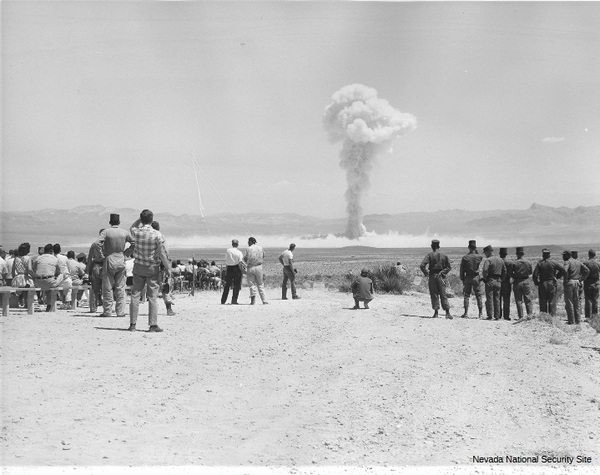Dublin Core
Title
Description
Between 1951 and 1992, the United States government tested 928 atomic bombs in the remote Nevada desert near Las Vegas, timing them so that prevailing winds carried the fallout eastward. Onlookers from southern Utah camped out on the hoods of their cars to watch desert dust plume into the Nevada sky. But it wasn’t long before these same rural Utahns started to witness sores and hair loss on their livestock. Then, genetic mutations and spiking cancer rates among their families and neighbors forced them to band together and demand action from the federal government.
They called themselves “Downwinders” – and their pleas were unheard at first. In one 1956 trial, Downwinders argued that nuclear testing was responsible for the deaths of 4,500 sheep in rural Utah, but the government defense team withheld scientific data and pressured witnesses to help them win the case. Other studies from the 1950s found that children died of leukemia in southern Utah at two and a half times the normal rate. All of this, it was becoming clear, was due to atomic testing. But it wasn’t until the 1980s that the government began to acknowledge its role in these deaths. This was in part because an exposé noted that ninety-one of the 220 actors and crew on the John Wayne film The Conqueror – that had filmed near St. George in 1954 – were diagnosed with cancer, with many – including Wayne -- dying from their disease. Could it be possible, Americans began to wonder, that the US government's careless nuclear testing had actually killed John Wayne?
Eventually, Downwinder activism from rural Utah’s communities led to the 1990 Radiation Exposure Compensation Act, and a series of class action lawsuits led to an official apology from the US government, as well as monetary compensation for individuals exposed to fallout between 1942 and 1971.
Because of the efforts of Utah’s rural Downwinders – as writers, social workers, filmmakers, and more – Americans are now more aware of the effects of nuclear testing. Because nuclear fallout spread far and wide, we are all in a sense Downwinders. But it is this group of rural Utahns who brought important attention to the issue for the betterment of our communities.
Creator
Source
_______________
See University of Utah, “Downwinders of Utah Archive,” accessed 2023; Palak Jayswal, “New film ‘Downwind’ explores the long shadow of nuclear fallout in Utah and beyond,” January 19, 2023, Salt Lake Tribune, accessed 2023; Wudan Yan, “Fallout: First cancer, now delayed compensation for Indigenous downwinder communities,” May 4, 2020, High Country News, accessed 2023.

